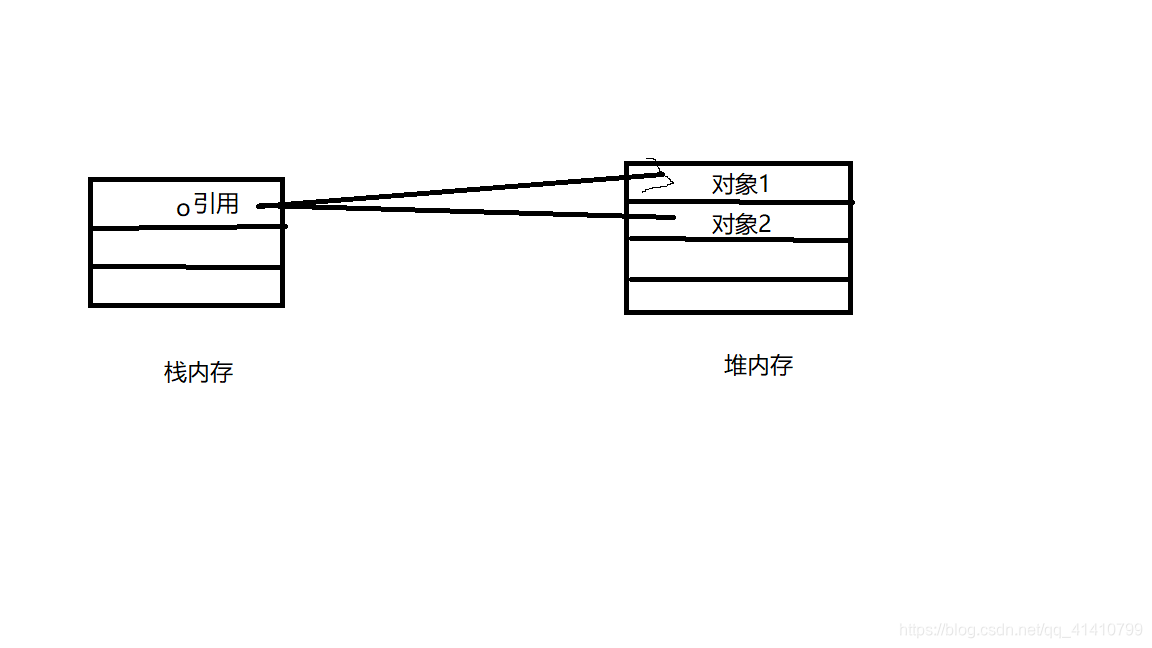synchronized关键字可以添加在方法的声明上,也可以添加在代码块中
添加在方法上时分两种情况,当为静态方法时,表示的是对该类的.class对象上锁
当不为静态方法时,表示的是对该类的对象上锁。
添加在代码块时,需要指定上锁的对象。
public class Synchonizedd {
static Long start,end;
static
{
start = System.currentTimeMillis();
}
//锁定this对象
public synchronized void m1() {
try {
TimeUnit.SECONDS.sleep(2);
} catch (InterruptedException e) {
e.printStackTrace();
}
end =System.currentTimeMillis();
System.out.println(end-start+" m1");
}
//锁定Synchonizedd.class 对象
public static synchronized void m2(){
try {
TimeUnit.SECONDS.sleep(2);
} catch (InterruptedException e) {
e.printStackTrace();
}
end =System.currentTimeMillis();
System.out.println(end-start+" m2");
}
public void m3() {
//锁定this对象
synchronized (this)
{
try {
TimeUnit.SECONDS.sleep(2);
} catch (InterruptedException e) {
e.printStackTrace();
}
end =System.currentTimeMillis();
System.out.println(end-start+" m3");
}
}
public static void main(String[] args) {
Synchonizedd synchonizedd = new Synchonizedd();
new Thread(()->synchonizedd.m1()).start();
new Thread(()->Synchonizedd.m2()).start();
new Thread(()->synchonizedd.m3()).start();
}
}
运行结果:

可以看到,因为m1和m2方法锁定的不是同一对象,所以调用m1方法的线程和调用m2方法的线程能够并行执行。
而m1和m3中的synchronized代码块锁定的是同一对象,调用两个方法的线程不能并行运行,等到其中一个释放该对象锁之后另一个线程才会运行。
synchnized 操作是原子操作,不可分。
一个synchnized 方法运行中,一个非同步方法是可以运行的
public class T2 {
static long start,end;
static
{
start = System.currentTimeMillis();
}
public synchronized void m1()
{
System.out.println(Thread.currentThread().getName()+" m1");
try {
Thread.sleep(2000);
} catch (InterruptedException e) {
e.printStackTrace();
}
end=System.currentTimeMillis();
System.out.println("当前时间为:"+(end-start) +" m1 to end");
}
public void m2()
{
try {
Thread.sleep(1000);
} catch (InterruptedException e) {
e.printStackTrace();
}
end=System.currentTimeMillis();
System.out.println("当前时间为:"+(end-start)+" "+Thread.currentThread().getName()+" m2");
}
public static void main(String[] args) {
T2 t2 = new T2();
new Thread(()->t2.m1(),"Thread1").start();
new Thread(()->t2.m2(),"Thread2").start();
}
}
运行结果:

上述代码中,我们开启了两个线程,一个线程执行m1方法,另一个执行m2方法,m1方法执行是需要获得锁的,m2方法不需要获得锁的,所以当m1执行的过程中,m2方法是可以同时执行的。
一个同步方法可以调用另一个同步方法,一个线程已经拥有某个对象的锁,再次申请时仍然会得到该对象的锁,也就是说synchronized获得的锁是可重入的。
public class T3 {
public synchronized void m1()
{
try {
Thread.sleep(1000);
} catch (InterruptedException e) {
e.printStackTrace();
}
//执行同一个需要获得锁的方法
m2();
System.out.println(Thread.currentThread().getName()+" m1");
}
public synchronized void m2()
{
try {
Thread.sleep(1000);
} catch (InterruptedException e) {
e.printStackTrace();
}
System.out.println(Thread.currentThread().getName()+" m2");
}
public static void main(String[] args) {
T3 t3 = new T3();
new Thread(()->t3.m1(),"th1").start();
}
}
运行结果:

上述代码中,我们开启了一个线程,这个线程去执行m1方法,m1方法是需要获得锁的,m1方法中又需要调用m2方法,而m2方法也需要获得锁,这就形成了需要获得T3类对象的两次锁,而实验结果表明m2方法是可以执行的,这说明synchronized获得的锁是可重入的。
子类调用父类的同步方法,锁定的是同一对象
public class T4 {
synchronized void m()
{
System.out.println("m start");
try {
Thread.sleep(1000);
} catch (InterruptedException e) {
e.printStackTrace();
}
System.out.println("锁定的对象是 "+this);
System.out.println("m end");
}
public static void main(String[] args) {
TT4 tt4 = new TT4();
new Thread(()->tt4.m(),"Thread").start();
}
}
class TT4 extends T4
{
public synchronized void m()
{
System.out.println("child m start");
super.m();
System.out.println("锁定的对象是 "+this);
System.out.println("child m end");
}
}
运行结果:

通过运行结果发现,锁定的确实是同一对象。
程序在执行过程中,如果发现异常,默认情况下锁是会被释放。
所以,在并发处理的过程中,有异常要多加小心,不然可能会发生不一致的情况。
比如,在一个web app处理过程中,多个servlet线程共同访问一个资源,这时如果异常处理不合适,在一个线程中抛出异常,其他线程就会进入同步代码区,有可能访问到异常产生时的数据。
因此要非常小心的处理同步业务逻辑中的异常。
public class T5 {
int count = 0;
public synchronized void m()
{
while (true) {
count++;
try {
Thread.sleep(1000);
} catch (InterruptedException e) {
e.printStackTrace();
}
if (count == 5) {
//加上try catch块则不会释放锁
/*try {
int i = 1 / 0;
}catch (Exception e)
{
e.printStackTrace();
}*/
//抛出异常,并释放锁
int i = 1 / 0;
}
System.out.println(Thread.currentThread().getName()+" count="+count);
}
}
public static void main(String[] args) {
T5 t5 = new T5();
new Thread(()->t5.m(),"t1").start();
try {
Thread.sleep(3000);
} catch (InterruptedException e) {
e.printStackTrace();
}
new Thread(()->t5.m(),"t2").start();
}
}
当不对异常进行处理时的运行结果(这里截取出现异常后的运行结果):

当对异常进行trycatch处理时的运行结果:

上述代码中,当抛出异常时,正在执行的方法会释放锁,而用trycatch处理之后,正在执行的方法不会释放锁。
synchronize 优化
同步代码块中的语句越少越好
public class T10 {
int count = 0;
synchronized void m1()
{
try {
Thread.sleep(2000);
for (int i=0;i<1000000;i++) count++;
Thread.sleep(2000);
} catch (InterruptedException e) {
e.printStackTrace();
}
}
void m2()
{
try {
Thread.sleep(2000);
//业务逻辑中只有这句话需要sync,这时不应该给整个方法上锁
//采用细粒度的锁,可以使线程争用时间变短,从而提高效率
synchronized (this)
{
for (int i=0;i<1000000;i++) count++;
}
Thread.sleep(2000);
} catch (InterruptedException e) {
e.printStackTrace();
}
}
}
锁定某个对象o,如果o的属性发生改变,不影响锁的使用。
但是如果o引用另外一个对象,则锁定的对象改变。
应避免将锁定对象的引用变成另外的对象
public class T11 {
Object o = new Object();
void m1()
{
// 锁定o引用的对象
synchronized (o) {
while (true) {
try {
Thread.sleep(1000);
} catch (InterruptedException e) {
e.printStackTrace();
}
System.out.println("运行的线程:"+Thread.currentThread().getName() );
}
}
}
public static void main(String[] args) {
T11 t11 = new T11();
new Thread(()->t11.m1(),"t1").start();
try {
Thread.sleep(2000);
} catch (InterruptedException e) {
e.printStackTrace();
}
Thread t2= new Thread(()->t11.m1(),"t2");
// 改变引用对象
t11.o = new Object();
t2.start();
}
}
运行结果:

上述代码中,先开启线程t1,然后t1执行m1方法,之后改变o的引用,然后开启一个线程t2,可以看到t1和t2同时运行,这是因为t2和t1获得的锁的对象是不一样的。
就像下面图片一样:

不要以字符串常量作为锁定对象。
在下面的例子中,m1和m2其实锁定的是同一个对象。
这种情况还会发生比较隐退的现象,比如你用到一个类库,在该类库中代码锁定了字符串"Hello"。
但是你读不到源码,所以在自己的代码中也锁定了"Hello",这时候就有可能发生非常诡异的死锁阻塞。
因为你的程序和你用到的类库不经意间使用了同一把锁
public class T12 {
String s1 = "Hello";
String s2 = "Hello";
void m1()
{
synchronized (s1)
{
while(true)
{
try {
Thread.sleep(1000);
} catch (InterruptedException e) {
e.printStackTrace();
}
System.out.println("运行的线程:"+Thread.currentThread().getName());
}
}
}
void m2()
{
synchronized (s2)
{
while(true)
{
try {
Thread.sleep(1000);
} catch (InterruptedException e) {
e.printStackTrace();
}
System.out.println("运行的线程:"+Thread.currentThread().getName());
}
}
}
public static void main(String[] args) {
T12 t12 = new T12();
new Thread(()->t12.m1(),"t1").start();
new Thread(()->t12.m2(),"t2").start();
}
}
运行结果:

使用Synchronized实现死锁
死锁形成的原理就是线程A需要线程B所占用的锁来执行程序,而线程B同时也需要线程A锁占用的锁来执行程序,这就导致了两个线程无休止的等待,等待对方释放占用的锁。
public class DeadLock {
public static void main(String[] args) {
D1 d1 = new D1();
D2 d2 = new D2();
new Thread(()->d1.m1(d2),"Thread1").start();
new Thread(()->d2.m1(d1),"Thread2").start();
}
}
class D1
{
public synchronized void m1(D2 d2)
{
try {
Thread.sleep(3000);
} catch (InterruptedException e) {
e.printStackTrace();
}
System.out.println(Thread.currentThread().getName());
d2.m2();
}
public synchronized void m2()
{
System.out.println("D1 m2");
}
}
class D2
{
public synchronized void m1(D1 d1)
{
try {
Thread.sleep(3000);
} catch (InterruptedException e) {
e.printStackTrace();
}
System.out.println(Thread.currentThread().getName());
d1.m2();
}
public synchronized void m2()
{
System.out.println("D2 m2");
}
}
运行结果:

可见线程1和线程2都在等待对方释放锁,而自己需要等待对方释放锁之后才释放自己的锁,这就导致了死锁的产生。








 本文深入解析Java中的synchronized关键字,探讨其在方法和代码块上的应用,以及如何处理锁的可重入性、死锁、异常释放等问题。通过实例演示不同场景下synchronized的行为表现。
本文深入解析Java中的synchronized关键字,探讨其在方法和代码块上的应用,以及如何处理锁的可重入性、死锁、异常释放等问题。通过实例演示不同场景下synchronized的行为表现。
















 1445
1445

 被折叠的 条评论
为什么被折叠?
被折叠的 条评论
为什么被折叠?








